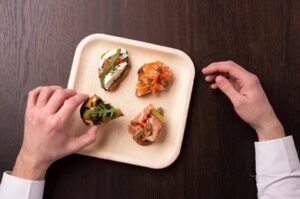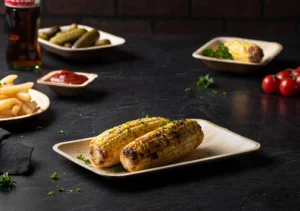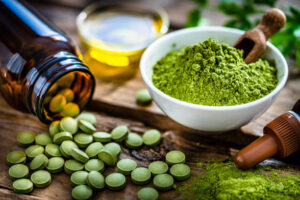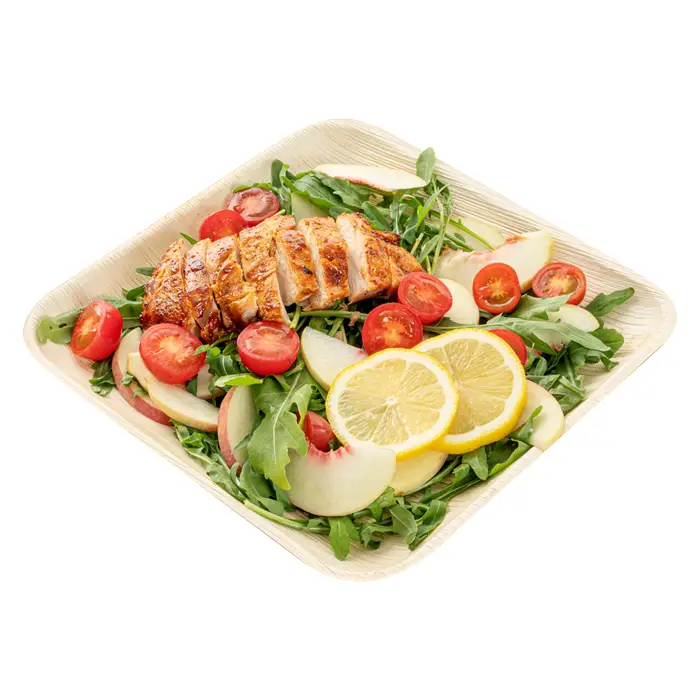
Palm Leaf Plates
Introduction
The urgency to reduce our reliance on plastic has never been more critical. One innovative solution gaining traction is the use of palm leaf plates. These eco-friendly alternatives not only offer a sustainable option but also add aesthetic value to our dining experiences.
The Problem with Plastic
The widespread use of plastic, particularly in disposable products like plates and utensils, has led to a host of environmental and health problems that are now impossible to ignore. Understanding the depth of these issues is crucial in realizing why switching to alternatives like palm leaf plates is not just beneficial, but necessary.
Environmental Impact
- Non-Biodegradable Nature: One of the most significant problems with plastic is its non-biodegradable nature. Plastic can take up to a thousand years to decompose, leading to long-term pollution in landfills and natural habitats.
- Wildlife Threat: Plastic waste in oceans and other ecosystems poses a grave threat to wildlife. Animals often mistake plastic for food, leading to ingestion and entanglement, both of which can be fatal.
- Pollution During Production: The production of plastic involves the emission of harmful gases, contributing to air pollution and climate change.
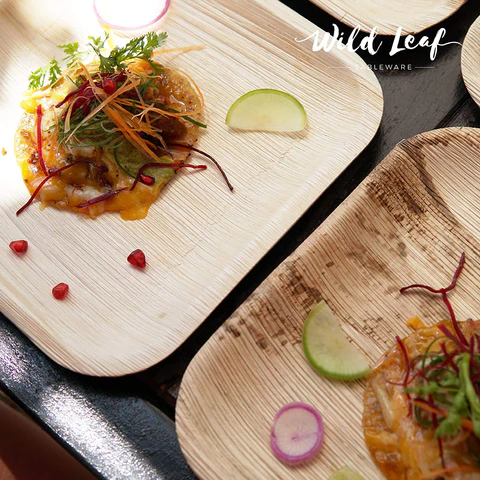
Health Concerns
- Chemical Leaching: Plastics, especially when used for food and beverages, can leach chemicals into what we consume. Some of these chemicals, like BPA, have been linked to health issues such as hormonal disruptions and cancer.
- Microplastics: As plastic breaks down, it forms microplastics that can infiltrate our food chain. These tiny particles have been found in various food products and even in drinking water.
Waste Management Burden
- Recycling Challenges: Although recycling is often touted as a solution, the reality is that only a small percentage of plastic is recycled effectively. The rest ends up in landfills, incinerators, or the natural environment.
- Cost of Waste Management: The cost of managing plastic waste – from collection and sorting to recycling or disposal – is significant and often a burden for municipalities and governments.
The problems with plastic are multifaceted and far-reaching. They touch upon every aspect of our environment and health, indicating a dire need for change. By moving away from plastic to more sustainable options like palm leaf plates, we can start to address these issues. The switch is more than a trend; it’s a step towards a more sustainable and healthy world.
Palm Leaf Plates: A Sustainable Solution
Palm leaf plates emerge as a beacon of hope in the quest for sustainable living. Crafted from the naturally shed leaves of the Areca palm tree, these plates represent an eco-conscious alternative to plastic, offering a blend of environmental benefits, practicality, and aesthetic appeal.
Environmentally Friendly Production
- Sustainable Source: The Areca palm leaves used for these plates are naturally shed by the trees. No trees are cut down in the process, making it a sustainable source of material.
- Chemical-Free Manufacturing: The production of palm leaf plates involves no harmful chemicals or additives. The leaves are simply collected, cleaned, and heat-pressed into shape, ensuring a 100% natural product.
- Biodegradability: Unlike plastic, palm leaf plates are completely biodegradable. They decompose within a few months after disposal, returning to the earth without leaving any harmful residues.
Practical Benefits
- Sturdy and Versatile: Palm leaf plates are surprisingly sturdy and can handle a variety of foods, including hot, wet, or heavy dishes. This makes them suitable for a wide range of culinary needs, from casual home use to formal events.
- Microwave and Oven Safe: Unlike many plastic alternatives, palm leaf plates can safely be used in microwaves and ovens, offering convenience and versatility.
Aesthetic Appeal
- Unique Look: Each palm leaf plate has a unique pattern and texture, imparting a rustic and elegant charm to the dining experience. This makes them particularly appealing for events where presentation is key.

Supporting Sustainable Communities
- Empowering Local Economies: The production of palm leaf plates often supports local economies in regions where Areca palms grow. It provides employment and promotes sustainable business practices.
In summary, palm leaf plates are not just an alternative to plastic; they are a step forward in our journey towards environmental responsibility. Their sustainable production, biodegradable nature, and practical advantages make them an exemplary solution in the fight against plastic pollution. By choosing palm leaf plates, we contribute to a healthier planet and a sustainable future.
Comparing Palm Leaf Plates to Plastic
When considering the shift from plastic to palm leaf plates, it’s essential to evaluate the differences between these two materials in terms of environmental impact, practicality, and overall user experience. This comparison highlights why palm leaf plates are not just an alternative, but a superior choice in many aspects.
Environmental Impact
- Biodegradability: The most striking difference lies in their environmental footprint. Palm leaf plates are fully biodegradable and decompose naturally within a few months, whereas plastic plates can take hundreds of years to break down, contributing to long-term pollution.
- Sustainable Production: Palm leaf plates are produced sustainably from naturally fallen leaves, with no harm to trees and no need for chemical processing. Plastic production, on the other hand, relies heavily on fossil fuels and involves emissions of greenhouse gases and other pollutants.
Health and Safety
- Chemical-Free: Palm leaf plates are free from chemicals and safe for food contact, unlike plastic plates, which can leach harmful substances like BPA into food, especially when heated.
- Heat Resistance: Palm leaf plates can safely be used in microwaves and ovens, a feature not commonly found in plastic plates, which can melt or release toxins when exposed to high temperatures.
Practicality and Usability
- Durability: Palm leaf plates are robust and can hold up against a variety of foods without bending or breaking, a quality often lacking in disposable plastic plates.
- Aesthetic Value: Each palm leaf plate has a unique, natural look, adding an element of rustic charm to the dining experience, while plastic plates often lack this aesthetic appeal.
Cost-Effectiveness
- Long-Term Savings: While palm leaf plates might have a higher upfront cost compared to some plastic alternatives, their environmental benefits lead to long-term savings by reducing pollution and waste management costs.
The Use of Palm Leaf Plates in Various Settings
Palm leaf plates, with their unique blend of environmental friendliness, durability, and aesthetic appeal, have found a place in various settings, from everyday home use to large-scale events and the hospitality industry. Their versatility is a testament to their functionality and the growing consciousness towards sustainable living.
Home Use
- Everyday Dining: In households, palm leaf plates offer an eco-friendly alternative for daily meals, especially for families seeking sustainable lifestyle choices.
- Special Occasions: Their unique and elegant appearance makes them ideal for special occasions like family gatherings, birthdays, and anniversaries, adding a touch of natural charm to the table setting.
Events and Catering
- Eco-Conscious Events: For events focused on sustainability, like green weddings or eco-friendly corporate gatherings, palm leaf plates are a perfect fit, aligning with the theme and demonstrating a commitment to the environment.
- Convenience and Style: Caterers find palm leaf plates convenient due to their sturdiness and ease of disposal, while also appreciating the style and sophistication they bring to event settings.
Restaurants and Cafés
- Sustainable Branding: Restaurants and cafés using palm leaf plates can boost their brand image by showcasing their commitment to sustainability, attracting customers who value eco-conscious dining experiences.
- Diverse Cuisine Compatibility: The versatility of palm leaf plates makes them suitable for a wide range of cuisines, from casual cafes to fine dining restaurants, enhancing the overall presentation of dishes.
Outdoor Activities
- Picnics and Barbecues: For outdoor activities like picnics and barbecues, palm leaf plates are an ideal choice due to their durability and biodegradability, making them easy to dispose of without environmental harm.
- Camping and Outdoor Events: Their lightweight and nature-friendly properties make palm leaf plates a practical choice for camping trips and outdoor festivals.
In every setting, the use of palm leaf plates goes beyond just serving food; it’s a statement about environmental responsibility and a step towards a more sustainable future. Whether it’s a home, a grand event, or a cozy café, choosing palm leaf plates is a simple yet powerful way to contribute to a healthier planet.

The Global Impact of Switching to Palm Leaf Plates
The shift towards palm leaf plates from traditional plastic or other non-biodegradable materials has the potential to create a significant positive impact on a global scale. This transition not only addresses environmental concerns but also influences economic and social factors worldwide.
Reduction in Plastic Waste
- Decreased Pollution: By replacing plastic plates with palm leaf alternatives, we can substantially reduce the amount of non-biodegradable waste that pollutes landfills, oceans, and natural habitats.
- Wildlife Protection: Reducing plastic waste also means less harm to wildlife, as many animals suffer from ingesting or getting entangled in plastic debris.
Climate Change Mitigation
- Lower Carbon Footprint: The production of palm leaf plates is more environmentally friendly, involving lower greenhouse gas emissions compared to the manufacturing of plastic plates, thereby aiding in the fight against climate change.
Promoting Sustainable Practices
- Encouraging Green Industries: The demand for palm leaf plates can boost sustainable industries, promoting eco-friendly practices in manufacturing and business operations.
- Economic Opportunities in Producing Regions: Regions where Areca palms grow can benefit economically from the production and export of palm leaf plates, creating jobs and supporting local communities.
Cultural Shift Towards Sustainability
- Raising Awareness: The popularity of palm leaf plates can increase awareness about environmental issues and encourage more people and businesses to make eco-conscious choices.
- Setting a Precedent: By adopting sustainable products like palm leaf plates, we set a precedent for future innovations and solutions in the realm of eco-friendly living.
Health Benefits
- Safer Food Consumption: Moving away from plastics, known for chemical leaching, to natural palm leaf plates can have positive health implications for consumers.
In conclusion, the global impact of switching to palm leaf plates is multifaceted, benefiting the environment, economy, and society at large. This seemingly small change in consumer habits and industry practices can contribute significantly to a more sustainable and healthy planet, echoing the growing global call for responsible living.
Challenges and Considerations
While the adoption of palm leaf plates offers numerous environmental and health benefits, there are challenges and considerations that need to be addressed. These issues are crucial for ensuring a smooth transition and maximizing the positive impact of this sustainable alternative.
Availability and Accessibility
- Limited Reach: In some regions, palm leaf plates might not be as readily available as traditional plastic or paper options, making accessibility a challenge.
- Cost Factors: Depending on the location and market, the cost of palm leaf plates can be higher than conventional alternatives, potentially limiting their adoption, especially in budget-sensitive settings.
Consumer Mindset and Habits
- Resistance to Change: People accustomed to using plastic plates may resist switching to palm leaf plates due to habit or a lack of awareness about the benefits.
- Perception Issues: Some consumers might perceive palm leaf plates as less durable or less suitable for certain types of food, despite their proven versatility and strength.
Environmental Considerations
- Sustainable Sourcing: Ensuring that the palm leaves are sourced sustainably and ethically is crucial to maintain the environmental integrity of the product.
- Transportation Carbon Footprint: The transportation of palm leaf plates from production areas to global markets can contribute to carbon emissions, which needs to be considered and minimized.
Market Dynamics and Regulation
- Regulatory Hurdles: In some countries, there may be regulatory barriers or a lack of incentives for sustainable products like palm leaf plates.
- Competition with Established Products: Palm leaf plates face competition from established plastic and paper alternatives, which might be cheaper or more heavily marketed.
Quality and Standards
- Consistency in Quality: Maintaining consistent quality and meeting health and safety standards can be challenging, especially as production scales up.
- Standardization: The lack of standardized sizes and shapes may affect their acceptance in certain markets or for specific uses.
In addressing these challenges, it’s important to foster awareness, encourage policy changes, and innovate in production and distribution methods. Overcoming these hurdles is key to fully realizing the potential of palm leaf plates as a sustainable alternative to traditional disposable plates.
How to Make the Switch
Transitioning to palm leaf plates from traditional disposable options like plastic or paper is a commendable step towards sustainability. However, making the switch effectively involves a combination of awareness, gradual change, and embracing new habits. Here are some tips and strategies for individuals and businesses to make this transition smoothly.
For Individuals
- Start Small: Begin by using palm leaf plates for special occasions or gatherings. This gradual introduction helps in getting accustomed to the new alternative.
- Educate Yourself and Others: Learn about the benefits of palm leaf plates and share this knowledge with friends and family to encourage a collective shift.
- Experiment with Different Uses: Try using palm leaf plates in various settings – from daily meals to outdoor picnics – to understand their versatility.
- Make Informed Purchases: Research and purchase from reputable suppliers who source their products sustainably and ethically.
For Businesses
- Incorporate into Brand Values: For businesses, especially in the food and hospitality industry, adopting palm leaf plates can be part of a broader commitment to sustainability.
- Customer Education: Inform customers about the switch and the reasons behind it. This transparency can enhance customer loyalty and attract environmentally conscious consumers.
- Gradual Integration: Start by introducing palm leaf plates in certain areas or events before making a complete switch, allowing time for adjustment and feedback.
- Partner with Sustainable Suppliers: Establish relationships with suppliers who can consistently provide high-quality, sustainably sourced palm leaf plates.
Policy and Community Engagement
- Advocate for Change: Encourage local communities and policymakers to support sustainable products through incentives, awareness campaigns, and legislation.
- Community Involvement: Participate in or organize community events where palm leaf plates are used, showcasing their practicality and benefits.
- Sustainable Networking: Connect with others who are making similar changes to share experiences, challenges, and best practices.
Making the switch to palm leaf plates is not just a personal or business decision, but a step towards a more sustainable future. It requires a shift in mindset, a willingness to embrace new practices, and a commitment to environmental stewardship. With these strategies, individuals and businesses can effectively transition to using palm leaf plates, contributing to a greener, cleaner planet.
The Role of Government and Policy Makers
The role of government and policy makers is pivotal in promoting the use of sustainable alternatives like palm leaf plates. Their actions can significantly influence public behavior, market dynamics, and ultimately, the environmental impact of consumer choices. Here are key areas where government and policy intervention can make a difference.
Legislation and Incentives
- Ban on Single-Use Plastics: Implementing bans or restrictions on single-use plastics can push both consumers and businesses to seek out eco-friendly alternatives like palm leaf plates.
- Subsidies and Tax Incentives: Offering financial incentives, such as subsidies or tax breaks, for manufacturing and purchasing sustainable products can lower their cost and make them more competitive in the market.
- Support for Research and Development: Funding research and development in sustainable materials can lead to improved quality and reduced costs of products like palm leaf plates.
Supporting Sustainable Practices
- Government Procurement Policies: Governments can lead by example by using sustainable products in their operations and events, thereby setting a standard for others to follow.
- Public Awareness Campaigns: Conducting educational campaigns to raise awareness about the environmental impact of plastic and the benefits of alternatives can change public perception and behavior.
- Partnerships with Businesses and NGOs: Collaborating with businesses and non-governmental organizations can amplify efforts to promote sustainable alternatives and ensure wider reach and impact.
Regulatory Framework
- Standardization and Quality Control: Establishing standards for quality and safety for sustainable products ensures consumer trust and consistent product experience.
- Clear Labeling Requirements: Mandating clear labeling on products regarding their environmental impact can help consumers make informed choices.
Global Cooperation
- International Agreements and Protocols: Participating in international environmental agreements can foster global cooperation in reducing plastic use and promoting sustainable alternatives.
- Sharing Best Practices: Governments can share successful strategies and learn from each other to enhance the global adoption of eco-friendly products.
The role of government and policy makers is not just regulatory but also inspirational, setting a tone for environmental responsibility and sustainable living. By creating a conducive environment for the adoption of products like palm leaf plates, governments can significantly contribute to the global effort to combat environmental degradation and promote a healthier planet.
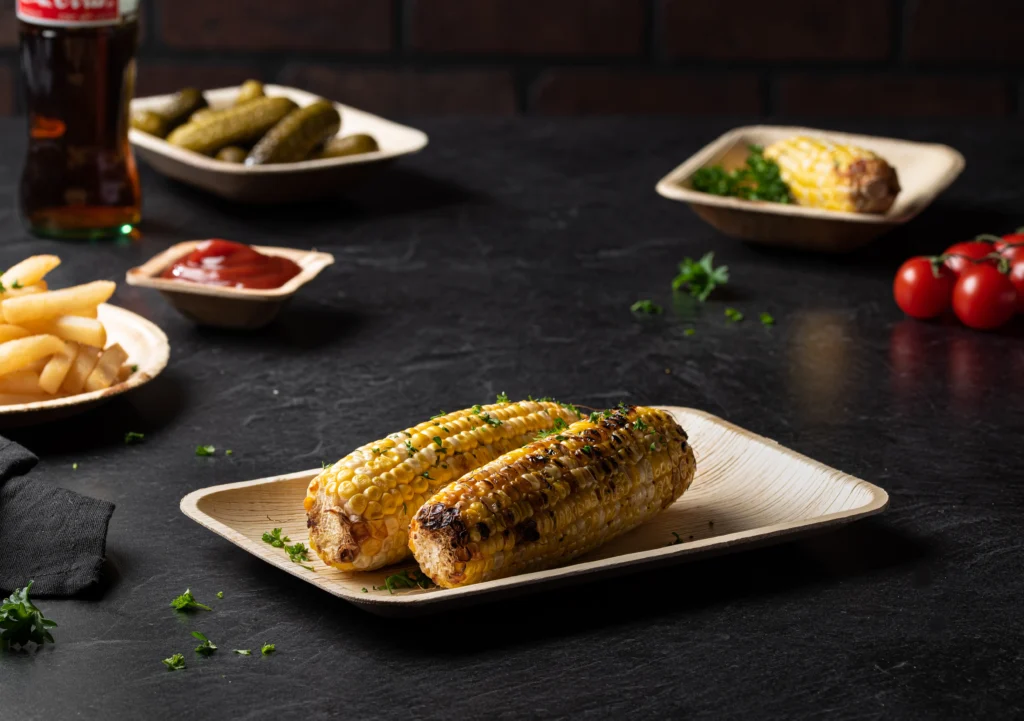
Success Stories: Case Studies
The transition to sustainable alternatives like palm leaf plates has been embraced by various entities across the globe, leading to inspiring success stories. These case studies demonstrate the practicality, environmental impact, and economic benefits of this switch. Let’s explore a few notable examples.
Case Study 1: Eco-Friendly Wedding in California
A couple in California decided to have an eco-friendly wedding, making a conscious choice to use palm leaf plates for their reception. The decision was driven by their commitment to sustainability and desire to reduce the environmental impact of their event. The use of palm leaf plates not only added a unique aesthetic to the wedding but also significantly reduced waste. The guests were impressed with the quality and look of the plates, and the couple received praise for their environmentally conscious choice.
Case Study 2: Sustainable Restaurant in Bali
A restaurant in Bali, known for its commitment to sustainability, replaced all its plastic and paper plates with palm leaf alternatives. This move aligned with the restaurant’s ethos of being in harmony with nature and its focus on organic and locally sourced ingredients. The switch not only reduced the establishment’s carbon footprint but also enhanced the dining experience for customers, who appreciated the eco-friendly approach and the natural feel of the plates.
Case Study 3: Corporate Event in London
A corporate event in London, focusing on environmental sustainability, chose to use palm leaf plates for its catering needs. The decision was part of the company’s broader initiative to reduce its environmental impact. The palm leaf plates were well-received by attendees, who noted the sturdy quality and elegant design. The event organizers reported a reduction in waste and an increase in attendee engagement regarding the company’s sustainability efforts.
Case Study 4: School Cafeteria Program in Canada
A school in Canada implemented a program to replace disposable plastic and styrofoam lunchware with palm leaf plates. The initiative was part of an educational program to teach students about environmental responsibility. The switch not only reduced waste and exposure to plastics but also served as a practical learning tool for students about the importance of sustainable living.
These case studies showcase the diverse applications and benefits of palm leaf plates across different settings – from personal events to commercial establishments and educational institutions. They illustrate how a simple change, such as switching to eco-friendly tableware, can have a significant and positive environmental impact, while also resonating with people’s growing desire to contribute to a more sustainable world.
The Future of Sustainable Tableware
The future looks promising, with ongoing innovations in sustainable tableware. Technology is expected to play a significant role in developing even more eco-friendly options.
Your Role in the Change
In the global effort to reduce environmental impact and promote sustainability, every individual has a role to play. Switching to palm leaf plates from traditional disposable options is a small but significant step that can be taken. Here’s how you, as an individual, can contribute to this change and help create a more sustainable future.
1. Making Conscious Choices
- Choose Sustainable Products: Opt for palm leaf plates and other eco-friendly alternatives whenever possible. Your choice as a consumer sends a strong message to manufacturers and retailers about the demand for sustainable products.
2. Spreading Awareness
- Educate Your Circle: Share the benefits of using palm leaf plates with family, friends, and colleagues. Sometimes, a simple conversation can spark a change in others’ habits and choices.
- Social Media Influence: Use social media platforms to spread awareness about the environmental impact of plastic and the advantages of sustainable alternatives.
3. Supporting Sustainable Practices
- Support Eco-Friendly Businesses: Patronize businesses that use sustainable practices and products, including palm leaf plates. Your support helps these businesses thrive and sets an example for others to follow.
- Participate in Community Initiatives: Engage in or organize community events that promote sustainability, like clean-up drives, eco-friendly fairs, or educational workshops.
4. Advocacy and Activism
- Voice Your Opinions: Reach out to local representatives or participate in public forums to advocate for policies that support environmental sustainability.
- Join Environmental Groups: Becoming part of environmental groups or NGOs can amplify your impact through collective efforts and initiatives.
5. Continuous Learning and Improvement
- Stay Informed: Keep yourself updated about environmental issues and sustainable solutions. Being well-informed empowers you to make better choices and influence others effectively.
- Reflect and Improve: Regularly assess your lifestyle choices and look for areas where you can further reduce your environmental footprint.
Your role in this change is crucial. Individual actions, when multiplied by millions, can have a profound impact on our planet. By choosing palm leaf plates and advocating for sustainable practices, you contribute to a healthier environment and a more sustainable future for all. Remember, every small step counts in the journey towards a greener world.
Conclusion In conclusion, the switch from plastic to palm leaf plates is not just an environmentally sound decision but also a step towards a more sustainable lifestyle. Let’s embrace this change for a better future.
FAQ Section
- How long do palm leaf plates take to decompose?
- Unlike plastic, palm leaf plates decompose within a few months, returning to the earth without leaving harmful residues.
- Are palm leaf plates safe for all types of food?
- Yes, they are ideal for all food types, including hot, cold, wet, or dry dishes.
- Can palm leaf plates be reused?
- While they are primarily designed for single use, they can be gently cleaned and reused for dry foods.
- What is the cost comparison between palm leaf and plastic plates?
- Palm leaf plates are competitively priced and often comparable to high-quality plastic options.
- How can I convince others to switch to palm leaf plates?
- Share information about their environmental benefits and encourage trial use to experience their practicality and aesthetic appeal.
